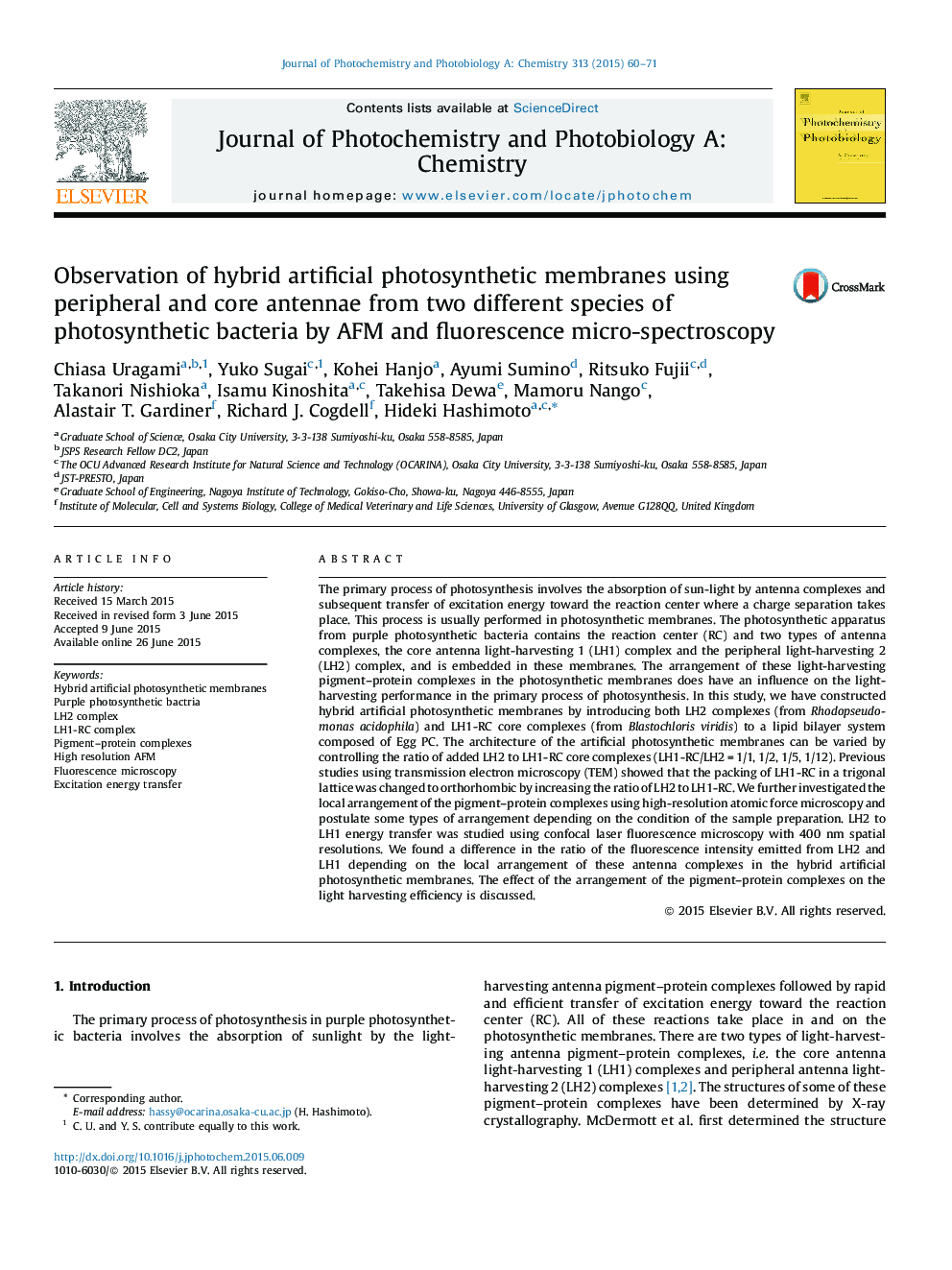| کد مقاله | کد نشریه | سال انتشار | مقاله انگلیسی | نسخه تمام متن |
|---|---|---|---|---|
| 26466 | 43954 | 2015 | 12 صفحه PDF | دانلود رایگان |

• Artificial Hybrid photosynthetic membranes were constructed by introducing both LH2 complexes (from Rps. acidophila) and LH1-RC core complexes (from Blc. viridis) to a lipid bilayer system composed of Egg PC.
• The architecture of the artificial photosynthetic membranes can be varied by controlling the ratio of added LH2 to LH1-RC core complexes.
• The local arrangement of the pigment–protein complexes has been investigated using high-resolution atomic force microscopy.
• LH2 to LH1 energy transfer was studied using confocal laser fluorescence microscopy with 400 nm spatial resolutions.
• A difference in the ratio of the fluorescence intensity emitted from LH2 and LH1 was found depending on the local arrangement of the antenna complexes in the hybrid artificial photosynthetic membranes.
The primary process of photosynthesis involves the absorption of sun-light by antenna complexes and subsequent transfer of excitation energy toward the reaction center where a charge separation takes place. This process is usually performed in photosynthetic membranes. The photosynthetic apparatus from purple photosynthetic bacteria contains the reaction center (RC) and two types of antenna complexes, the core antenna light-harvesting 1 (LH1) complex and the peripheral light-harvesting 2 (LH2) complex, and is embedded in these membranes. The arrangement of these light-harvesting pigment–protein complexes in the photosynthetic membranes does have an influence on the light-harvesting performance in the primary process of photosynthesis. In this study, we have constructed hybrid artificial photosynthetic membranes by introducing both LH2 complexes (from Rhodopseudomonas acidophila) and LH1-RC core complexes (from Blastochloris viridis) to a lipid bilayer system composed of Egg PC. The architecture of the artificial photosynthetic membranes can be varied by controlling the ratio of added LH2 to LH1-RC core complexes (LH1-RC/LH2 = 1/1, 1/2, 1/5, 1/12). Previous studies using transmission electron microscopy (TEM) showed that the packing of LH1-RC in a trigonal lattice was changed to orthorhombic by increasing the ratio of LH2 to LH1-RC. We further investigated the local arrangement of the pigment–protein complexes using high-resolution atomic force microscopy and postulate some types of arrangement depending on the condition of the sample preparation. LH2 to LH1 energy transfer was studied using confocal laser fluorescence microscopy with 400 nm spatial resolutions. We found a difference in the ratio of the fluorescence intensity emitted from LH2 and LH1 depending on the local arrangement of these antenna complexes in the hybrid artificial photosynthetic membranes. The effect of the arrangement of the pigment–protein complexes on the light harvesting efficiency is discussed.
Graphical AbstractFigure optionsDownload as PowerPoint slide
Journal: Journal of Photochemistry and Photobiology A: Chemistry - Volume 313, 1 December 2015, Pages 60–71